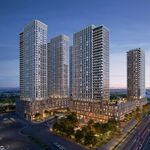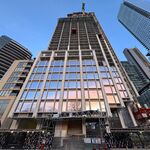Euphoria
Active Member
How about trees, bike paths, and public art?
I agree that the stretch of the Gardiner between Jarvis and the DVP carries more traffic, but removing it only adds a few minutes to drivers' commutes, yet it is a much cheaper option than the Gardiner Hybrid with significant benefits for reconnecting the the city to the lake and creating important north-south gateways to the Port Lands.
Neither Chicago, Boston, San Francisco, New York, Paris, or London would accept this.
I always shake my head after leaving the St. Lawrence Market and the old York area to visit the waterfront. It's such a substandard connection to walk across and under such a bleak corridor. Neither Chicago, Boston, San Francisco, New York, Paris, or London would accept this. It's poor.
How about trees, bike paths, and public art?
Agreed, it is very bleak under there. I'm okay with the Gardiner and concept of an elevated expwy, but I'd be a fool to say it doesn't stymie the gateway to our waterfront. Lake Shore is a real barrier, but the Gardiner is like a dark ugly shroud to this barrier.
There are improvements here and there, and what we've done with the Richmond/Adelaide/Eastern flyover is nothing short of phenomenal. But with the Gardiner, particularly the central section where we see tens of thousands walk under every day (not to mention drive under), the City really should create some kind of taskforce to find quick and easy improvements to the streetscape. It needn't cost us an arm and leg either, and s.37 could go a long way. Unless there are regulations preventing painting, illuminating, and decorating a bridge structure/elevated highway, we should tackle this issue. Even while rehab work continues.
Agreed, it is very bleak under there. I'm okay with the Gardiner and concept of an elevated expwy, but I'd be a fool to say it doesn't stymie the gateway to our waterfront. Lake Shore is a real barrier, but the Gardiner is like a dark ugly shroud to this barrier.
There are improvements here and there, and what we've done with the Richmond/Adelaide/Eastern flyover is nothing short of phenomenal. But with the Gardiner, particularly the central section where we see tens of thousands walk under every day (not to mention drive under), the City really should create some kind of taskforce to find quick and easy improvements to the streetscape. It needn't cost us an arm and leg either, and s.37 could go a long way. Unless there are regulations preventing painting, illuminating, and decorating a bridge structure/elevated highway, we should tackle this issue. Even while rehab work continues.
Think that people will no longer drive into downtown Toronto, should they implement a toll on city owned expressway?
Why are so many people still driving into New York City?
Toll Prices (U.S. Dollars) for the Most Popular Tunnels & Bridges around New York City
George Washington Bridge, connects New Jersey/Manhattan, $15.00 (Eastbound ONLY)
Lincoln Tunnel, connects New Jersey/Manhattan, $15.00 (Inbound to NYC ONLY)
Holland Tunnel, connects New Jersey/Manhattan, $15.00 (Inbound to NYC ONLY)
Queens Midtown Tunnel, connects Manhattan/Queens, $8.00 (Each Way)
Hugh L Carey Tunnel, connects Manhattan/Brooklyn, $8.00 (Each Way)
Verrazano-Narrows Bridge, connects Staten Island/Brooklyn, $16.00 (Inbound Staten Island ONLY)
Bayonne Bridge, connects New Jersey/Staten Island, $15.00 (Inbound Staten Island ONLY)
Goethals Bridge, connects New Jersey/Staten Island, $15.00 (Inbound Staten Island ONLY)
Outerbridge Crossing, connects New Jersey/Staten Island, $15.00 (Inbound Staten Island ONLY)
And we're worried about $2.00 (Canadian)





